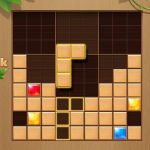Introduction
The Frisbee and Bucket game, often referred to as “Frisbee Golf” or “Disc Golf,” is a dynamic and engaging outdoor activity that combines the precision of traditional golf with the thrill of Frisbee throwing. It’s a game that can be enjoyed by players of all ages and skill levels, offering a perfect balance of physical activity, strategic thinking, and social interaction. Whether you are playing casually in your backyard or competing on a professionally designed course, this game provides endless fun and a unique challenge. In this blog post, we will explore the various aspects of the Frisbee and Bucket game, from its basic rules and equipment to advanced strategies and variations that can elevate your gameplay.
History And Evolution Of The Frisbee And Bucket Game
The origins of the Frisbee and Bucket game can be traced back to the early 20th century, where people began experimenting with various flying discs for recreational purposes. The term “Frisbee” itself comes from the Frisbie Pie Company, whose pie tins were initially used as makeshift flying discs. Over time, these tins were replaced by plastic discs designed specifically for the purpose of throwing, leading to the development of various Frisbee-based games.
The concept of Frisbee Golf, or Disc Golf, emerged in the 1960s when players began to adapt the rules of traditional golf to a Frisbee-based format. The objective was simple: throw a Frisbee from a designated starting point towards a target, usually a bucket or a similar container, in as few throws as possible. As the popularity of the game grew, more formalized rules and courses were established, leading to the formation of professional Disc Golf associations and tournaments. Today, the Frisbee and Bucket game is recognized as a legitimate sport with a global following, boasting thousands of courses and millions of players worldwide.

Basic Rules And Gameplay
The Frisbee and Bucket game is straightforward in its basic form, making it accessible to beginners while still offering depth for more experienced players. The game typically starts with players taking turns to throw a Frisbee from a designated starting point, known as the “tee,” towards a target, which is often a bucket or a disc golf basket. The goal is to land the Frisbee in the bucket or hit the target in as few throws as possible. Each throw counts as a stroke, similar to golf, and the player with the fewest strokes at the end of the game wins.
The game can be played individually or in teams, and the number of targets can vary depending on the size of the playing area and the desired length of the game. In more organized settings, such as disc golf courses, players follow a set sequence of targets, with each target representing a different “hole.” The course is usually designed with various obstacles and terrain features to increase the difficulty and add strategic elements to the game.
One key rule in Frisbee Golf is that players must throw their Frisbee from the spot where it lands after each throw without moving closer to the target. This rule encourages players to carefully plan their throws and consider factors such as wind direction, distance, and obstacles. The game ends once all players have completed the course or the predetermined number of targets, with the winner being the player with the lowest total stroke count.
Equipment Needed For The Frisbee And Bucket Game
The equipment required for the Frisbee and Bucket game is minimal, making it an inexpensive and easy-to-organize activity. The most essential item is the Frisbee, also known as a disc in the context of disc golf. Frisbees come in various sizes, weights, and designs, each suited for different types of throws and distances. For beginners, a basic all-purpose Frisbee will suffice. Still, more advanced players often use a variety of discs designed for specific purposes, such as drivers for long-distance throws, mid-range discs for accuracy, and putters for short, controlled throws.
The other crucial piece of equipment is the target, typically a bucket or a disc golf basket. For casual play, any container that can catch or stop a Frisbee can be used as a target, but official disc golf baskets are designed with chains and a basket to catch the disc more reliably. These baskets are usually mounted on a pole and can be easily set up in various locations.
In addition to the Frisbee and target, players might want to carry a scorecard and a pencil to keep track of their throws. Some players also use a marker disc to indicate the spot from which they should make their next throw, ensuring consistency and fairness in the game. For more competitive play, specialized bags are available to carry multiple discs, snacks, water, and other essentials during a round of Frisbee Golf.
Strategies For Winning The Frisbee And Bucket Game
While the Frisbee and Bucket game is easy to learn, mastering it requires a combination of skill, strategy, and practice. One of the most important aspects of the game is understanding how to control the Frisbee’s flight. The angle at which the Frisbee is released, the speed of the throw, and the spin applied to the disc all influence its trajectory and distance. Players need to practice different types of throws, such as the backhand, forehand, and overhead throws, to adapt to various situations and distances.
Course management is another crucial element of the game. Players must evaluate each target and plan their throws accordingly, considering factors such as wind, obstacles, and the layout of the course. For example, on a windy day, it might be better to throw the Frisbee at a lower angle to reduce the wind’s effect on its flight. Similarly, when facing obstacles like trees or water hazards, players need to decide whether to take a safe, conservative throw or attempt a more challenging shot to gain an advantage.
Another key strategy is to focus on accuracy rather than power. While long throws can be impressive, they are often more difficult to control and can lead to errant shots that add strokes to a player’s score. By prioritizing accuracy, players can consistently land their Frisbee closer to the target, reducing the number of throws needed to complete each hole. In addition, practicing putting, or the final throw to land the Frisbee in the bucket, is essential, as this can make a significant difference in close games.

Variations Of The Frisbee And Bucket Game
One of the appealing aspects of the Frisbee and Bucket game is its versatility. The basic concept can be modified in numerous ways to create different variations that cater to players’ preferences, skill levels, and available playing areas. For instance, one popular variation is “Ultimate Frisbee Golf,” which combines elements of Ultimate Frisbee and traditional Frisbee Golf. In this version, players form teams and take turns throwing the Frisbee towards the target, with the goal of completing the course in the fewest team throws. This variation emphasizes teamwork, communication, and strategy, making it a great option for larger groups.
Another variation is “Speed Frisbee Golf,” where players race against the clock to complete the course as quickly as possible. In this fast-paced version, accuracy is still important, but speed becomes a critical factor, adding an extra layer of excitement and physical challenge. Speed Frisbee Golf is ideal for players looking for a more intense workout or a competitive twist on the traditional game.
For younger players or those new to the game, “Mini Frisbee Golf” offers a scaled-down version of the sport. This variation uses smaller Frisbees and targets, making it easier for beginners to learn the basics of throwing and aiming. Mini Frisbee Golf is perfect for backyard play, school events, or family gatherings, as it requires less space and can be adapted to suit any age group.
Another fun variation is the “Frisbee Golf Relay,” in which players form teams and take turns throwing the frisbee. Each team member completes one throw before passing the disc to the next player. The objective is to complete the course as a team with the fewest combined throws. This variation encourages collaboration and allows players of different skill levels to contribute to the team’s success.
Benefits Of Playing The Frisbee And Bucket Game
The Frisbee and Bucket game offers a wide range of physical, mental, and social benefits, making it an excellent activity for players of all ages. Physically, the game provides a full-body workout, as players engage in throwing, walking, and sometimes running across the course. The act of throwing a Frisbee works the muscles in the arms, shoulders, and core while walking or running, which involves moving between targets and providing cardiovascular exercise. For those looking to improve their fitness while enjoying the outdoors, frisbee golf is an ideal choice.
Mentally, the game challenges players to think strategically and make quick decisions based on the situation at hand. Each throw requires careful consideration of factors such as wind, distance, and obstacles, encouraging players to develop problem-solving skills and spatial awareness. Additionally, the focus and concentration needed to execute accurate throws can help improve mental clarity and reduce stress.

Conclusion
Socially, the Frisbee and Bucket game is a fantastic way to connect with others, whether through casual play with friends and family or by participating in organized events and tournaments. The game’s inclusive nature allows players of all ages and skill levels to compete together, fostering a sense of community and teamwork. Moreover, the relaxed pace of the game provides plenty of opportunities for conversation and bonding, making it a great activity for social gatherings and team-building events.
The Frisbee and Bucket game is particularly well-suited for children, offering a fun and engaging way to develop physical coordination, focus, and teamwork. The game’s simplicity and adaptability make it easy to modify for different age groups and skill levels, ensuring that younger players can enjoy the experience without feeling overwhelmed. For kids, the game can be made more accessible by using larger targets, shorter distances, and lighter Frisbees, allowing them to practice their throwing skills in a supportive environment.










